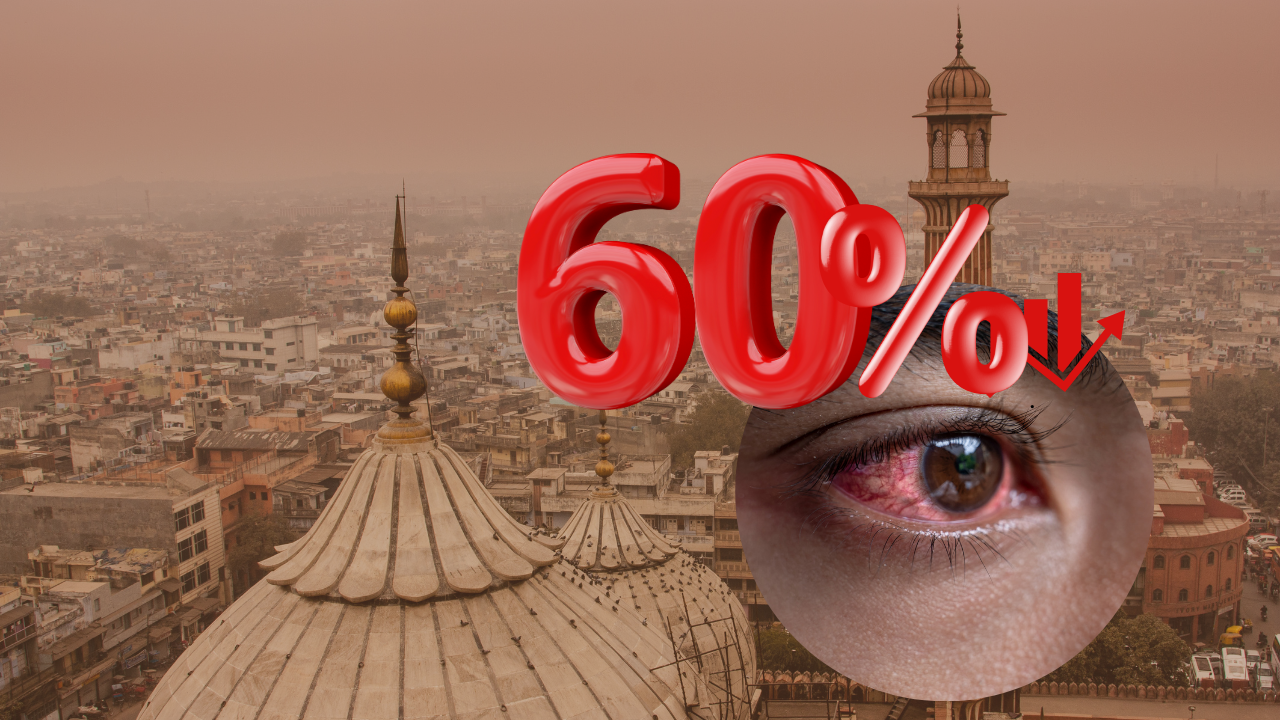Delhi Sees A 60% Surge In Patients With Eye Problems Due To Worsening Air Pollution, According To Doctor

Credits: Canva
SummaryDespite official data showing Delhi’s air quality as “poor,” ground reports indicate “severe” to “hazardous” levels, with AQI readings up to 739. Doctors report a 60% surge in eye-related issues like dryness, itching, and redness due to toxic smog. Experts blame particulate matter, chemical residues, and smoke from firecrackers. Read on.
End of Article
